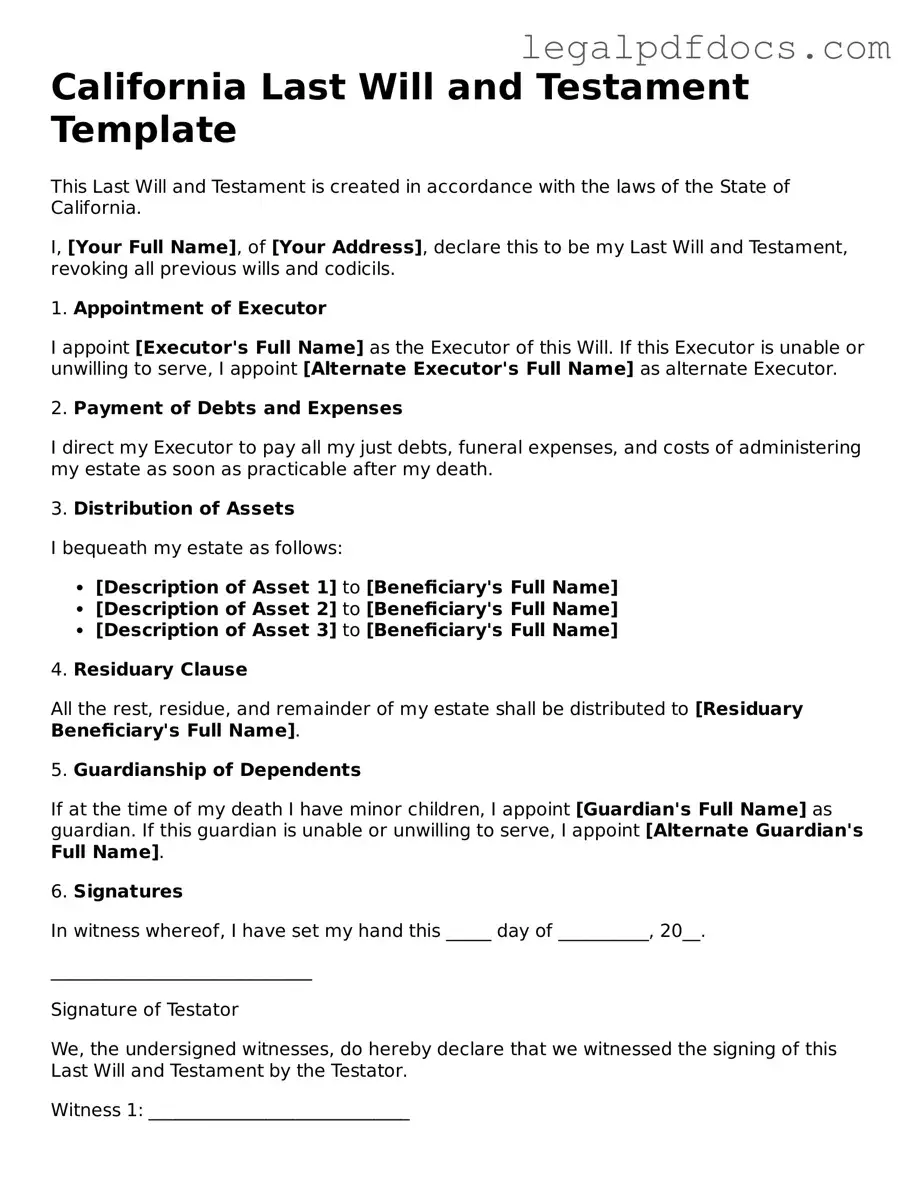Official Last Will and Testament Form for California
A California Last Will and Testament form is a legal document that outlines how a person's assets and affairs should be handled after their death. This form ensures that your wishes are followed regarding the distribution of property and the care of any dependents. To get started on securing your legacy, fill out the form by clicking the button below.
Open Last Will and Testament Editor Here
